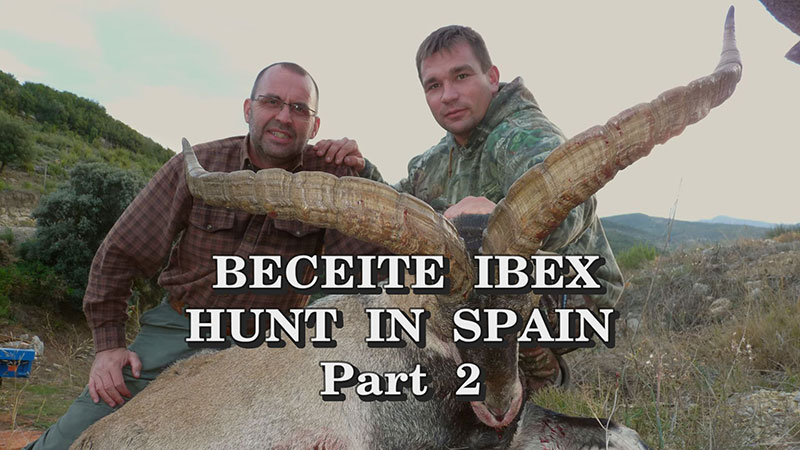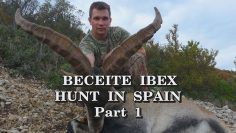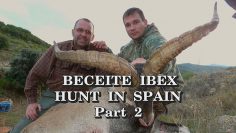Beceite Ibex Hunt in Spain – Part 2
Directors
Biographical
“Hunters in Action” is founded and owned by the photographer and professional hunter Norbert Fenyvesi. Norbert is specialized in hosted hunting trips worldwide where he accompanies and guides hunters around the globe. With Norbert’s more than 200 travel days every year, you can expect continuously new exciting film content on this channel.
Beceite ibex hunt in Spain (approx. 20 Min/Part)
The Tortosa Mountain is located in the north-eastern part of Spain, some 150 km from Barcelona, stretching southwest. Its rocky peaks, densely covered in vegetation, provide ideal habitat for the beceite ibex. Out of the four ibex species indigenous to Spain, it is perhaps the beceite ibex native to these parts, that can grow the most impressive and thickest horns, luring mountain hunters in great numbers to the Tortosa Mountains.
The imposing headdress of the old beceite buck is not one of the most easily obtainable trophies. Hunting the Spanish beceite ibex poses a serious challenge to the hunters both from a physical and mental point of view. The rugged, bushy, rocky terrain peppered with cliffs and canyons, as well as the 1500-2000 meter high peaks put the endurance, determination and stamina of the hunter strictly to the test. But if the hunter is able to overcome the rough terrain and weather conditions, the Tortosa will be sure to reward him with wonderful hunting experiences.
This hunt takes place at the “La Serra d’ Espada” nature reserve. The professional staff working here pays special attention to wildlife management when it comes to the beceite ibex. They are intimately familiar with the population living here, and each hunting permit issued is preceded by careful consideration.
The mountain roads starting at the foot of the hills are only driveable up to a point, even by jeep. The older, large bucks, however, can only be approached on foot, by stalking. The (tele)scope helps the hunters spot the ibex from a great distance. They can take the time to position themselves and choose the best buck. What can also happen is that the hunters suddenly find themselves face to face with the ibex. In such a case, the guide must make a snap decision because the beast will lunge immediately after a mere split-second of surprise.
Thanks to the pleasant Mediterranean climate, the area is covered with dense, green vegetation almost all year. This provides the beceite ibex on the one hand an abundant source of food, and on the other hand great cover. However, it makes the hunters’ job significantly more difficult, as it is not an easy task to spot the beast moving among the dense vegetation from several hundred meters. This requires a sharp eye and a lot of experience.
During a mountain hunt, the hunter mustn’t forget that he needs to aim a little lower on a downhill slope, and a little higher uphill. Aiming is significantly easier if the riflescope also has a ballistic adjustment option. However, for that to work, the hunter must know the precise distance of the game. Otherwise the hunter has a long and strenuous tracking to look forward to on this unforgiving terrain.
Hunting the Spanish beceite ibex is a truly demanding task, where the hunter must have the right stamina, skills, determination and persistence in order to overcome the challenges of the rough terrain. But when after a hard day, they finally come down the hill with the coveted trophy in hand, albeit with sore muscles, they can rightfully feel that all that struggle on the beautiful Tortosa was well worth it after all.











